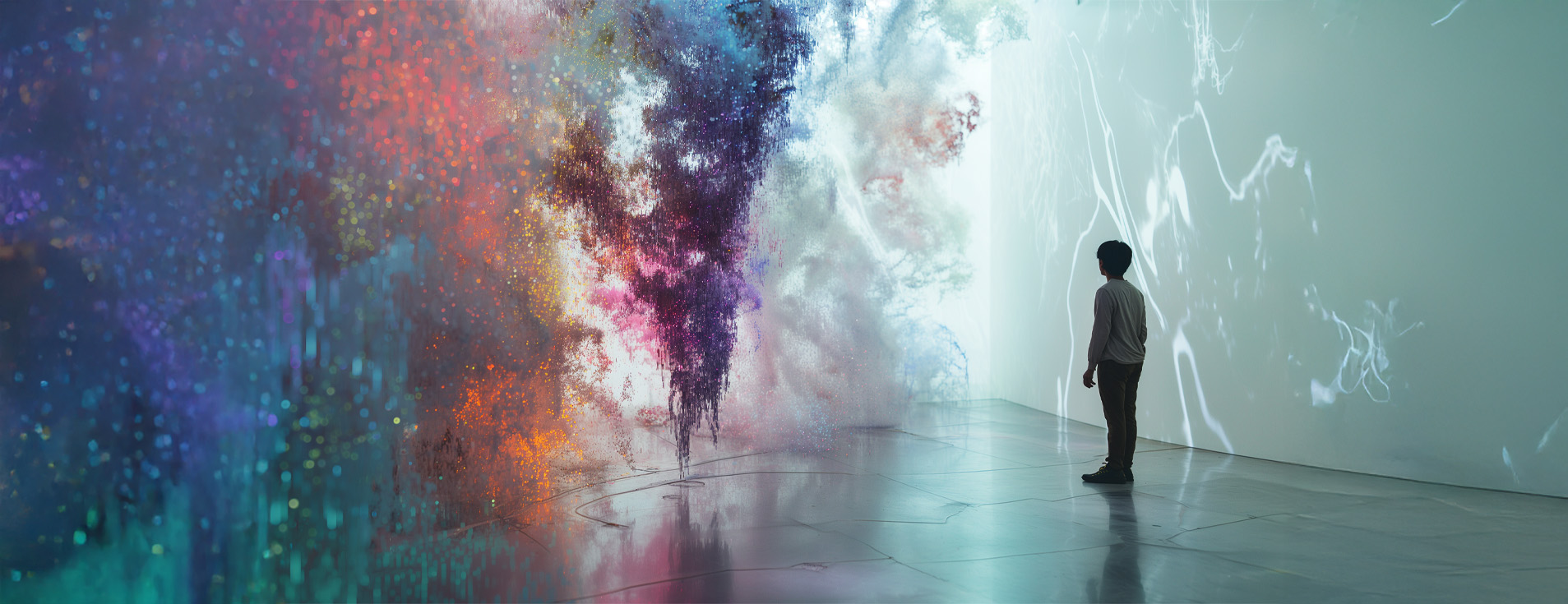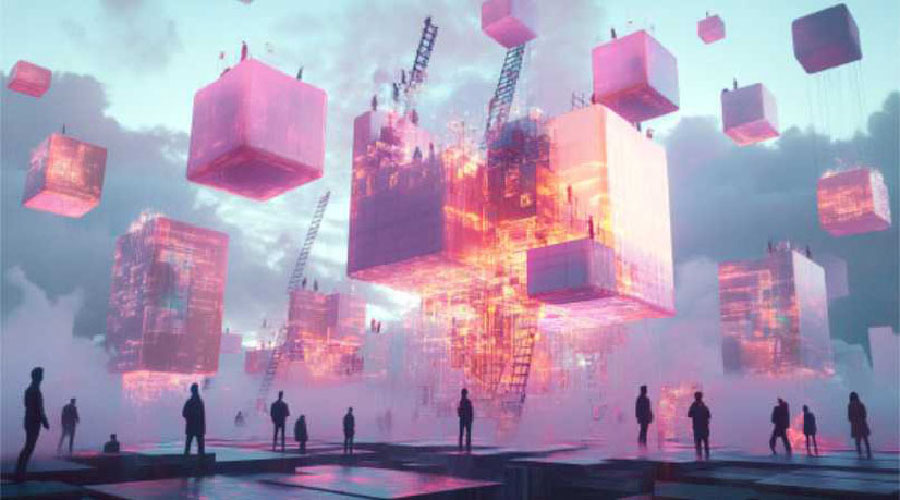




Content That Reads Your Mind
Remember when content marketing meant writing blog posts, hoping they’d rank on Google, and praying someone would read them? In 2025, that approach feels as outdated as dial-up internet. Today’s content marketing landscape has been completely reimagined through the lens of artificial intelligence, creating experiences that seem to anticipate what your audience wants before they even know they want it.
As someone who’s been tracking these changes, I’m continually amazed by how quickly the field has evolved. Let me walk you through what’s happening in AI-powered content marketing today and what it means for you as a brand manager.
The New Content Creation Ecosystem
Content creation has undergone perhaps the most visible transformation. The days of staring at a blank page are largely behind us, replaced by collaborative processes where humans and AI work together to create more engaging content in a fraction of the time.
According to the Content Marketing Institute’s 2025 Benchmark Report, 78% of successful B2B marketers now use AI tools for at least part of their content creation process. This isn’t about replacing writers-it’s about amplifying their capabilities.
The most effective teams are using what I call the “AI-Human Loop”:
- AI generates initial concepts and drafts based on strategic inputs
- Human creators refine, inject brand voice, and add unique insights
- AI optimizes the content for different platforms and audience segments
- Humans review and approve the final versions
Mastercard’s content team has embraced this approach, reducing their content production time by 60% while increasing engagement metrics by 35%. Their “Priceless Stories” campaign uses AI to identify promising customer experiences, which human writers then craft into emotionally resonant narratives.
Practical Step: Create an AI content workflow document that clearly defines which parts of your content creation process can be AI-assisted and which require human expertise. Start with one content type (like social posts or product descriptions) to refine your approach before expanding.
Hyper-Personalization at Scale
Today’s content isn’t just targeted at audience segments-it’s dynamically adapted for individual readers in real-time.
Spotify’s personalized “Wrapped” campaign was an early indicator of this trend. Now, brands across industries are creating content experiences that adapt based on a user’s behavior, preferences, and context.
Beauty retailer Sephora’s “Skincare Journey” emails now feature dynamically generated content that evolves based on purchase history, browsing behavior, and even local weather conditions (recommending different products during dry winter months versus humid summer periods).
The results speak for themselves. McKinsey’s 2025 Personalization Impact Study found that companies with advanced personalization capabilities are generating 25-30% more revenue from their content marketing efforts compared to those with basic or no personalization.
Practical Step: Start by identifying one high-value content channel where personalization would make a meaningful difference. For many brands, email is an ideal starting point because you already have rich customer data and the technical capabilities are well-established.
Predictive Content Intelligence
Perhaps the most exciting development is the shift from reactive to predictive content strategies. Advanced AI systems now analyze vast amounts of data to anticipate trending topics, audience interests, and content gaps before they become obvious.
Bloomberg Media has been at the forefront of this approach with their “Anticipate” content platform, which uses predictive intelligence to identify emerging business trends and automatically commission content that addresses reader questions before search volume spikes.
Their system correctly predicted the surge of interest in corporate carbon accounting nine weeks before it became a trending topic, allowing them to develop comprehensive resources that positioned them as thought leaders in the space.
According to Gartner’s 2025 Digital Marketing Survey, organizations using predictive content intelligence report 40% higher content efficiency (measured by engagement per piece) than those using traditional editorial calendars and trend monitoring.
Practical Step: Implement a monthly “predictive content planning” session where you use AI tools to analyze emerging trends in your industry. Compare these predictions with your planned content calendar and identify opportunities to address emerging topics before your competitors.
Visual Content Generation
Text isn’t the only content being transformed by AI. Visual content creation has undergone a revolution, with tools that can generate custom images, videos, and interactive experiences based on simple prompts or existing brand assets.
Adidas’s “Create Your Path” campaign uses AI to generate unique visual stories for customers based on their athletic interests and goals. Each customer receives personalized training videos and visualizations that feature environments and activities aligned with their preferences.
Adobe’s 2025 Digital Experience Report reveals that content with AI-generated visuals tailored to specific audience segments achieves 53% higher engagement than generic stock imagery.
Practical Step: Experiment with using AI image generation to create custom visuals for different audience segments.
Interactive Experiences That Learn
IKEA’s “Living Spaces” content hub uses AI to create interactive room designs that evolve based on user preferences.
Harvard Business Review found that brands implementing adaptive interactive content see session durations increase by 70%.
Practical Step: Reimagine a static content piece as an interactive experience.
Continuous Optimization
Netflix continuously optimizes their marketing content using AI to refine headlines, imagery, and calls to action.
Forrester’s 2025 Content ROI Report found 32% higher content ROI with continuous optimization.
Practical Step: Use AI analytics bi-weekly to review and improve content performance.
Ethical Considerations and Human Expertise
Microsoft’s “Transparent Content” initiative discloses AI-generated elements to build trust.
Edelman Trust Barometer: 67% of consumers want transparency about AI usage.
Practical Step: Create a disclosure strategy, e.g., a “content nutrition label.”
The Content Strategist of 2025
LinkedIn Workplace Skills Report: “AI-Human Content Collaboration” is the fastest-growing marketing skill.
Practical Step: Upskill your team in AI tools, ethics, and strategic applications.
Finding Your Balance
The future of content marketing is about synergy-humans and machines creating experiences together. Find your balance to deliver exceptional, relevant content.
devgurung@riverask.com

AI + Brand Design: The New Power Couple
Let’s face it-brand design and communication have always been the engine that powers a brand’s emotional connection with its audience. But in 2025, something exciting has turbocharged that engine: Artificial Intelligence.
No, AI isn’t replacing your creative team or writing your brand story for you. What it’s doing is enhancing everything-from how you design, to how you speak, to how you connect in real time. AI is helping brands become more responsive, personal, and deeply engaging. In short, it’s making brand design and communication more powerful than ever.
So how can brand managers tap into this evolving relationship between AI and brand building? Let’s explore what’s new, what’s possible, and what you can do right now.
1. Personalization at Scale: From Mass Communication to Micro-Moments
The old approach to brand messaging was “one big idea for many people.” Today, with AI-powered personalization, it’s about “many ideas for one person at a time.”
AI allows you to tailor messages, visuals, and even tones of voice based on a user’s preferences, mood, location, and behavior. This makes your communication feel more human, even when it’s automated.
What you can do:
- Use AI platforms like Persado or Phrasee to personalize subject lines, headlines, and CTAs.
- Leverage tools like Dynamic Yield or Adobe Target to serve personalized website content.
- Integrate real-time behavioral data into your campaigns using platforms like Segment.
Example: Spotify’s “Wrapped” campaign is a masterclass in personalized storytelling-millions of unique visual and audio summaries tailored to individual users. This wasn’t just fun; it was strategic brand intimacy.
Implication: Design systems need to be flexible, allowing for visual and tonal variation without losing consistency. Brand managers must work closely with UX, data, and tech teams to ensure personalization doesn’t dilute identity.
2. AI-Driven Creative: More Ideas, Faster Execution
AI is helping designers and creatives move faster by generating visual options, writing initial copy drafts, and even animating prototypes. This means more time can be spent refining big ideas instead of being bogged down by repetitive tasks.
What you can do:
- Use Adobe Firefly or Canva’s Magic Design to generate visual assets.
- Test Jasper or ChatGPT for early concept copy or campaign names.
- Set up creative workflows with Notion AI or Figma AI to streamline team collaboration.
Example: Coca-Cola’s “Create Real Magic” platform invited users to co-create AI-generated art using OpenAI tools. It sparked global user participation, building brand equity while celebrating creativity.
Implication: Creative directors must act like curators-guiding AI to match the brand’s voice and visual language. Designers should treat AI not as a shortcut but as a creative collaborator.
3. Performance-Led Storytelling: Creativity Meets Data
One of the most exciting shifts is how AI is closing the loop between content creation and performance. You’re no longer designing in the dark-AI helps you test, learn, and optimize in real time.
What you can do:
- Deploy AI tools like Albert or Pattern89 to optimize digital campaigns.
- Use heatmap analysis from Hotjar or Crazy Egg to improve UX design.
- Set up feedback loops from campaign performance data to inform future designs.
Example: Booking.com uses AI to dynamically test layouts, CTAs, and colors on its platform, constantly refining based on user behavior. That’s design guided by intelligence.
Implication: Creative strategy must now consider performance data as part of the brief. Design and communication teams should sit alongside data scientists and analysts.
4. Visual Content Is King-And AI Makes It Easier
Visual content continues to dominate-especially in social, e-commerce, and video-first platforms. With AI, you can now create immersive, interactive, and even 3D content with less time and budget.
What you can do:
- Use tools like Runway ML or Synthesia for quick video creation.
- Try Luma AI or Vectary for interactive 3D product models.
- Build immersive landing pages using Webflow and integrate AI motion triggers.
Example: IKEA uses AI-enhanced AR tools to let customers visualize furniture in their homes. It’s not just cool-it removes friction from the buying decision.
Implication: Designers need to learn new skills-motion design, AR, 3D rendering-to keep up. Creative teams should also partner with tech-savvy producers and experience designers.
5. Virtual Brand Reps & Influencers: The Face of the Future
Virtual influencers and brand avatars are reshaping how brands show up in digital spaces. These characters can be fully AI-generated, brand-owned, and 24/7 available-opening up exciting new storytelling formats.
What you can do:
- Develop a virtual brand character using tools like Character.ai or Soul Machines.
- Partner with existing AI influencers (like Lil Miquela or Imma) for niche collaborations.
- Use these avatars for customer service, storytelling, or brand tutorials.
Example: Lu do Magalu, Brazil’s top virtual influencer, has millions of followers and regularly promotes products on behalf of Magazine Luiza.
Implication: Brand voice now includes visual identity in motion-how your avatar looks, talks, reacts. This needs strong creative direction and cross-platform consistency.
6. Smarter Content Marketing from Start to Finish
AI is enhancing the entire content marketing lifecycle-from planning to publishing. It helps you find the right topics, craft SEO-smart articles, schedule across platforms, and track how each piece performs.
What you can do:
- Use MarketMuse or Clearscope to plan content around audience intent.
- Schedule AI-assisted publishing with Buffer, Later, or Hootsuite.
- Analyze content performance with dashboards from Tableau or Google Looker Studio.
Example: HubSpot uses its own AI tools to recommend content topics to users based on audience search behavior.
Implication: Content design must balance creativity with searchability. Writers, strategists, and SEO specialists must work closely to avoid robotic content.
The Road Ahead: What This Means for Brand Managers
AI is not just a tool-it’s a shift in how we build emotional connections at scale. But connection still requires craft. And that’s where brand design and communication shine.
Here’s your next steps:
- Audit your readiness: Are your design systems AI-adaptable? Is your brand voice clear enough for machines?
- Build for flexibility: Create brand assets that flex across moods, mediums, and markets.
- Train your people: Upskill creatives in prompt engineering, motion design, and AI literacy.
- Pilot, test, learn: Try one AI-assisted project this quarter-like personalized email headers or a branded chatbot.
- Stay human: The magic happens when human creativity guides AI’s scale and speed.
Resources Worth Reading
- McKinsey (2023): State of AI in Marketing
- Deloitte: The AI-Driven Enterprise
- WARC: AI and the Creative Process
- Adobe (2022): Future of Creativity Report
- Forrester: The Evolution of Content Strategy in the Age of AI
One Final Thought
AI has given us incredible new ways to design, communicate, and connect. But at the heart of every great brand is the same old thing: a human emotion, a clear message, a powerful story.
With AI, we can tell those stories better, faster, and to more people-without losing the soul that makes your brand matter.
And that? That’s the best thing that could’ve happened to brand design.
devgurung@riverask.com

AI Ate My Brand, Now What?
We’re living in wild, exciting times for brand building. AI is shaking up everything-from how we design, to how we talk to customers, to who (or what) represents our brand. Virtual influencers? Predictive analytics? AI-generated ad campaigns? This isn’t the future. It’s now.
So, what does all this mean for your role as a brand manager? How should strategy, design, communication, and creativity evolve? Let’s break it down together, in plain English-with examples, real tools, and steps you can take today.
1. Brand Strategy Isn’t a Fixed Plan Anymore
You know those neat annual brand plans? They’re becoming outdated faster than ever. AI tools are helping brands spot trends, behaviors, and mood shifts in real-time. So, strategy can’t be rigid anymore-it has to breathe and adapt.
Try this:
- Build flexible frameworks that allow your brand to show up differently across people, places, and moods.
- Use tools like Google Trends or predictive AI platforms to anticipate what’s coming next.
- Rethink your audience segments-not just age or income, but emotional needs and values. (Check out NeedScope for that.)
Cool example: Coca-Cola Brazil used AI to sense micro-emotions and local trends, adjusting their campaigns on the fly. That’s smart strategy in action.
2. Brand Design Has to Flex
Brand design used to be all about consistency. Now? It’s about adaptability. AI can create variations of logos, images, and layouts for different users in seconds. But it needs a system to play within.
Try this:
- Create flexible design systems that can stretch without breaking (think Spotify’s personalized playlists or Netflix’s thumbnail images).
- Use AI-friendly design tools like Adobe Firefly or Canva Brand Kits.
- Design for interactive spaces-VR, AR, motion graphics-not just static banners.
Cool example: Burberry used AI to design digital fashion pieces for social media, mixing tradition with tech.
3. Brand Communication Must Become a Two-Way Street
We’re shifting from “We talk, you listen” to real-time, back-and-forth conversations. AI chatbots, personalized emails, and voice assistants are changing how brands speak.
Try this:
- Build brand tone rules for bots and assistants-not just for ads.
- Use AI copy tools (like Jasper or ChatGPT), but always add human touch.
- Create swappable headlines and CTAs so content can be mixed and matched on the fly.
Cool example: Sephora’s AI chatbot gives personalized beauty tips that sound totally on-brand. It’s helpful and human.
4. Creative Strategy Is Now About Speed and Scale
The days of one perfect campaign are over. AI can generate 100 ad versions in minutes. So, your creative job? Set the direction-and let machines help with the rest.
Try this:
- Build content libraries and templates your AI tools can pull from.
- Use platforms like Persado to test and learn from hundreds of creative variations.
- Think like a showrunner: map the story, then let AI write the episodes.
Cool example: Heinz asked DALL·E to imagine “ketchup”-and people mostly drew a Heinz bottle. Proof that a strong brand lives in people’s minds.
5. Virtual Influencers Are a Real Thing
Yep, computer-generated influencers are taking over Instagram. And guess what? People love them. They’re consistent, always on-brand, and strangely relatable.
Try this:
- Create your own virtual brand rep who embodies your values.
- Or partner with a digital influencer (like Lil Miquela or Lu do Magalu) who aligns with your audience.
- Track results using AI tools that measure sentiment and engagement.
Cool example: Fashion brand Balmain created its own virtual model team. It turned heads and sparked conversations-without a single human celebrity.
So, What Should You Do Next?
Here’s a simple checklist:
- Check your AI readiness. Do your teams and tools support fast, data-driven work?
- Get your house in order. Set up templates, design systems, and shared brand assets.
- Train your people. AI can’t replace creativity-but your team needs to know how to work with it.
- Start small. Run one pilot with AI-generated content or chatbot support.
- Stay ethical. Be honest about AI use, protect customer data, and write some AI brand guidelines.
Curious to Learn More?
Here are some smart reads and reports:
- McKinsey: The State of AI in Marketing (2023)
- Adobe: The Future of Creativity Report (2022)
- Gartner: AI Trends in Marketing (2023)
- Deloitte Digital: Designing with AI
- HBR: Personalization That’s Not Creepy
One Last Thought
AI and virtual influencers aren’t taking your job-they’re amplifying your power. If you can lead with curiosity and stay nimble, you’ll help your brand connect in deeper, more personal, and more meaningful ways.
So the question isn’t “Will my role change?” It’s: How will I grow into this new, exciting world of brand-building?
devgurung@riverask.com


